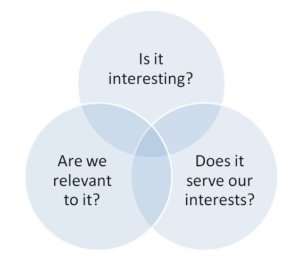Let’s face it, pitching is not a simple task, and getting noticed is not always guaranteed. Pitching is one of the most essential skills every public relations professional should know how to do, but it can take time before you’re able to finesse a pitch in a way that guarantees media interest.
At its most basic level, a pitch is a well-crafted but brief story about a brand or product. It is used to help brands gain exposure by targeting the key stories that will be a good fit for a media outlet. The intention of a pitch is to get coverage for a client in said publication. Pitches are sent to journalists, bloggers, editors, writers, influencers, and other prominent people within the media industry that can help create buzz around a client’s brand.
Tips For Crafting A Solid Pitch
- KNOW YOUR AUDIENCE: Knowing your audience is essential when crafting a quality pitch. In knowing who the right editor is for your story, you’re also ensuring that your story will reach the proper consumer audience that would buy your product. AMP3 PR is a fashion and lifestyle boutique agency with primarily fashion & consumer lifestyle facing clients. This means that if we are pitching a story for a beauty client, we are pitching this story to beauty & grooming editors. These editors are then writing their stories targeted at an audience that has a strong interest in the beauty, skincare, hair, and makeup industry; the same audience that just happens to be our client’s target consumer

2. REMEMBER THE 5W’S: It is vital to know all the details of what you are pitching and the story you are trying to sell. This is where the 5 W’S of pitching coming in: Who, What, Where, When, and Why. If you can answer all of these questions, the answers should help you shape the direction of your pitch. Once you’ve crafted your pitch, we suggest placing yourself in the journalist’s shoes and asking- if you were them, would you be interested in covering this story based on the pitch alone. If the answer is yes, you’re good to go. If the answer is no, then you’ve still got work to do
3. BE PERSONABLE & PROFESSIONAL: Remember that you are pitching a person, not a robot, so think about how to be both professional and personable. There is no exact science to this, but when done well, you’ll find a way to strike just the right balance. Imagine your pitch as a speed networking event, you have 1 minute to share your personality while also telling a journalist everything they need to know about your client’s brand.

4. TAILOR, TAILOR, TAILOR: The media industry is filled with editors and writers that cover just about every topic under the sun. Once you have an idea of who you want to pitch your story to, make sure you do your research and find out who they are and how they write. Try not to think about how they can help you, but instead, how you and your pitch can be of service to them. Then tailor, tailor, tailor your pitch to suit their needs.
Things to keep in mind: some journalists prefer to be approached formally, some like a K.I.S.S. (keep it short and simple) approach, others appreciate a good chuckle or two. Cision is a premier industry database used to discover publications and journalists, with specific details about who they are. It includes their contact information, a brief outline of their previous and current outlets, their title, and a brief bio on the specific topics they are willing to cover, along with the best times to contact them and other interesting information that will help you tailor your pitch.
5. CHECK IT ONCE AND THEN CHECK IT TWICE: The first draft of a pitch will never be the last draft, and neither will the one you think is just right. Every pitch is and should be different, and each is an opportunity to put your writing skills to the test in order to craft the right story for the right person. It takes time, patience, and practice to get it right.
Share this Post
